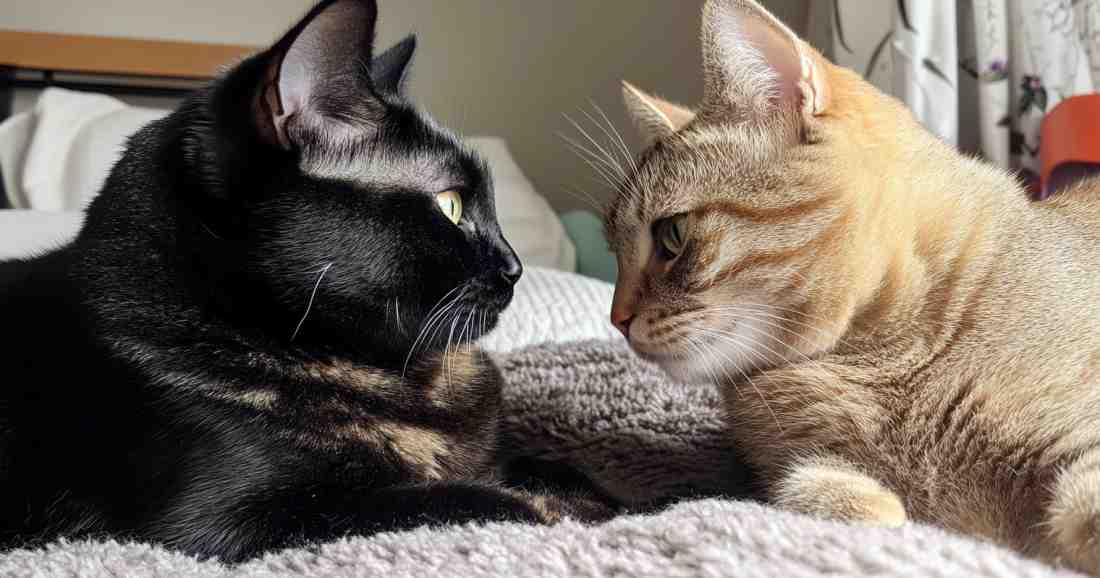
Do My Cats Like Each Other Quiz Decode Your Felines’ Friendship! Bringing multiple cats into the same home can be both rewarding and challenging. While some form instant bonds, others may take time—or never fully get along. If you have more than one cat, you might wonder if they truly like each other or if they simply tolerate one another. Feline relationships can be complex, with subtle body language and behaviors revealing how they feel about their companions. The Do My Cats Like Each Other Quiz will help you determine whether your cats are best friends, friendly rivals, or keeping a respectful distance.
Unlike dogs, cats are not naturally pack animals, but they can develop strong social bonds. Sibling kittens raised together often become lifelong companions, while adult cats introduced later in life may require time to adjust. Bonded cats groom each other, play together, and enjoy each other’s company. However, some cats prefer to keep their space and may only tolerate another feline in the household. Understanding their interactions can help you gauge the true nature of their relationship.
Signs That Your Cats Like Each Other
Cats may not always be obvious about their affection, but certain behaviors indicate a strong bond. Some key signs include:
- Mutual Grooming – Licking each other’s fur is a sign of trust and companionship.
- Sleeping Together – If your cats cuddle or nap close to each other, they share a strong bond.
- Play Fighting Without Aggression – Gentle wrestling and chasing are positive social behaviors between friendly cats.
- Rubbing Against Each Other – Cats transfer their scent as a way of marking loved ones as part of their territory.
- Sharing Space Peacefully – If they sit, eat, or relax near each other without tension, they likely feel comfortable together.
Signs of Tension or Rivalry Between Cats
Not all cats enjoy the company of others, and some relationships remain neutral or even tense. Look for these signs of dislike or territorial disputes:
- Hissing, Growling, or Swatting – Aggressive vocalizations or swipes indicate stress or discomfort.
- Blocking Access to Resources – One cat preventing the other from reaching food, water, or the litter box is a sign of dominance.
- Tail Flicking and Puffed-Up Fur – These defensive postures show irritation or unease.
- Avoiding Each Other – If your cats rarely interact and always stay in separate areas, they may not be interested in bonding.
- Chasing That Leads to Stress – Playful chasing is normal, but if one cat always hides or seems distressed, it could be bullying.
Helping Cats Build a Better Relationship
If your cats seem distant or tense around each other, there are ways to improve their relationship. Gradual introductions, scent swapping, and ensuring plenty of resources can reduce tension. Providing separate food bowls, litter boxes, and sleeping spaces prevents territorial disputes. Interactive play sessions can also help them associate each other with positive experiences.
Fun Facts About Cat Friendships
- Some Cats Form Inseparable Bonds – Bonded pairs often show distress if separated, making them best adopted together.
- Male-Female Pairs Often Get Along Best – While any combination can work, opposite-sex pairs tend to have fewer dominance struggles.
- Cats Communicate Through Tail Language – A gently swaying tail usually signals contentment, while a flicking tail may indicate irritation.
- Purring Isn’t Just for Humans – Cats sometimes purr around other cats to show comfort and relaxation.
- Not All Cats Need a Companion – Some cats prefer solitude and are happiest being the only pet in the household.
Take the Do My Cats Like Each Other Quiz Now!
Curious about your cats’ relationship? The Do My Cats Like Each Other Quiz will help you understand their bond, whether they’re best friends, occasional playmates, or distant roommates. By recognizing their behaviors, you can create a more harmonious environment for your feline family. Take the quiz now and find out how well your cats truly get along!
Cat Quizzes – Are you a true feline expert?
Living with multiple cats can be a challenge—especially if there’s tension in the air. If your feline friends aren’t getting along, stress might be a factor. Take the Does My Cat Have Anxiety Quiz to see if nervousness is causing issues. If your love for your cat is overflowing, make sure it’s mutual with the Do I Love My Cat Too Much Quiz. And if you’re still analyzing your cats’ relationships, revisit the Do My Cats Like Each Other Quiz—the results might surprise you!
